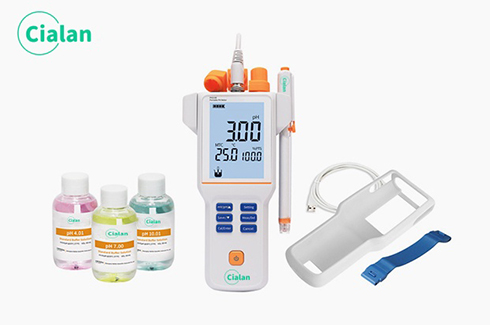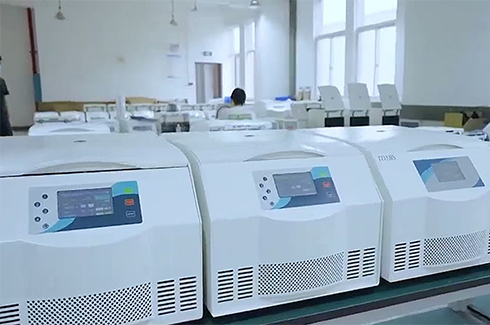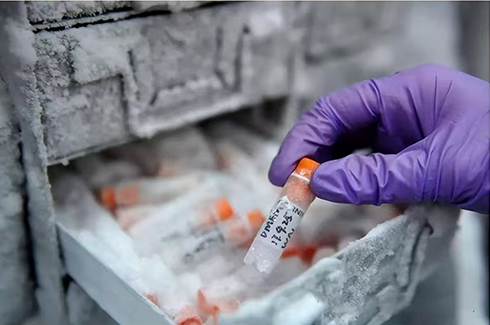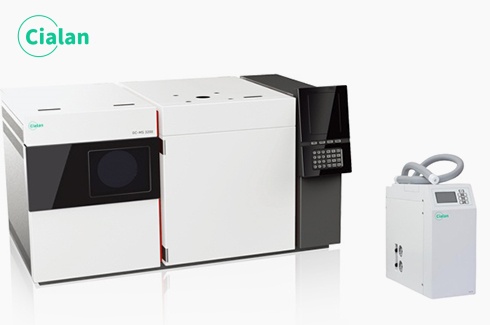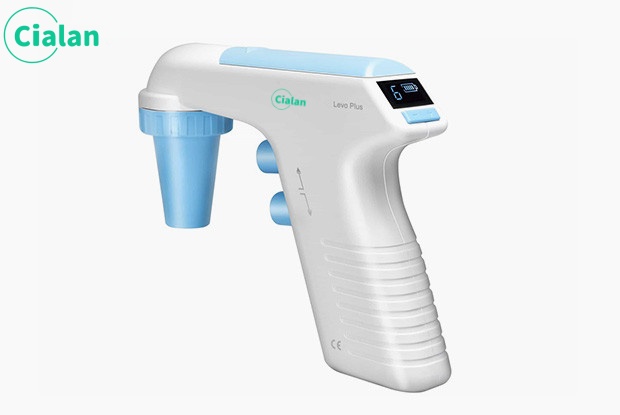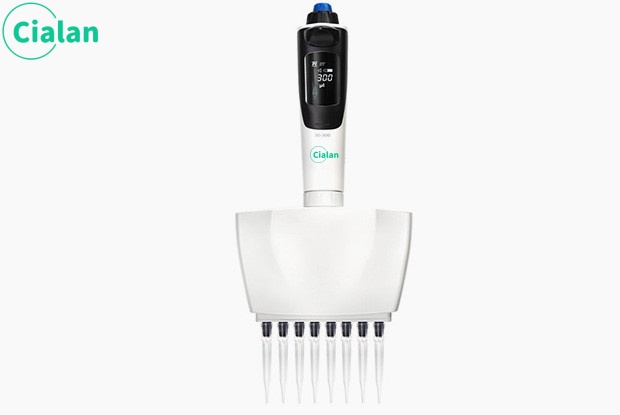How to use a pipette correctly?
Pipette's correct operation is important.
The correct use of the pipette is crucial, which is not only related to the accuracy of the experimental results, but also affects the service life of the pipette. The following is a method for the correct use of the pipette:
1. Choose a suitable pipette
Choose a pipette of the corresponding range according to the liquid volume range required for the experiment. Generally speaking, when choosing a pipette, its maximum range should be slightly larger than the volume of liquid to be transferred to ensure accuracy. For example, if you need to transfer 100μL of liquid, it may be more appropriate to choose a pipette with a range of 200μL.
Consider the accuracy requirements of the pipette. The accuracy of pipettes of different brands and models may vary. For experiments requiring high precision, a pipette with higher accuracy should be selected.
2. Range adjustment
Before using the pipette, you must first adjust the range according to the volume of liquid to be transferred. It is strictly forbidden to adjust the range when aspirating liquid to avoid damaging the internal mechanical structure of the pipette.
When adjusting the range, the range adjustment knob should be rotated slowly to avoid excessive force that may cause damage to the knob or inaccurate range. When it is rotated to the required range, you will hear a "click", indicating that the range has been locked.
3. Tip Installation
Choose a tip that matches the pipette. Different brands and models of pipettes may require tips of different specifications. Make sure that the tip and the pipette are well sealed to prevent liquid leakage.
When installing the tip, insert the pipette vertically into the tip and press down gently until you hear a "click", indicating that the tip is firmly installed. Avoid inserting the tip at an angle during installation to avoid damaging the pipette or the tip.
4. Tightness Check
Before aspirating liquid, a tightness check should be performed to ensure that the seal between the pipette and the tip is good. You can immerse the tip in the liquid and gently rotate the pipette to observe whether there is any liquid leakage.
If liquid leakage is found, the tip should be replaced or the pipette should be checked for damage. At the same time, pay attention to check whether the tip is deformed or damaged. If there is a problem, it should be replaced in time.
5. Liquid Absorption
When aspirating liquid, the pipette should be inserted vertically into the liquid to avoid tilting. The insertion depth should be adjusted according to the properties of the liquid and the size of the container. Generally speaking, the insertion depth should not be too deep to avoid sucking impurities at the bottom of the container.
Press the aspiration button of the pipette and slowly release it to allow the liquid to be sucked into the tip. Keep it stable during the aspiration process to avoid bubbles. If you need to absorb viscous liquids or volatile liquids, you can adjust the aspiration speed appropriately.
6. Liquid discharge
Aim the tip at the target container and gently press the discharge button of the pipette to slowly discharge the liquid. Keep the pipette vertical during the discharge process to avoid tilting to cause liquid residue or splashing.
After the discharge is completed, wait for a few seconds to allow the liquid in the tip to be completely discharged before removing the pipette from the container. If multiple discharges are required, the above operation can be repeated.
7. Tip removal
When removing the tip, the pipette should be placed vertically and the tip pusher should be gently pressed by hand to push the tip out.
Avoid excessive force that may cause damage to the pipette or splashing of the tip.
The removed tip should be placed in a designated waste container to avoid contamination caused by random discarding.
8. Regularity of pipettes
After use, the pipette should be adjusted to the maximum range to reduce the pressure of the spring and extend the service life of the pipette.
Wipe the outer shell of the pipette with a clean paper towel or soft cloth to remove dust and stains. If the pipette is contaminated, it can be cleaned with an appropriate detergent, but be careful to avoid damaging the internal structure of the pipette.
Store the pipette in a dry, ventilated place, away from direct sunlight and high temperature environment. If the pipette is not used for a long time, it should be stored in a dedicated pipette box to prevent damage.
Summary
The correct guarantee of the success of the pipette experiment. Everyone working in the laboratory should be able to pipette correctly. There is a big premise for correct pipetting: correctly understand, use, calibrate, and maintain the pipette equipment. The operation of the manual pipette seems simple, but if you want to use it handy and absorb the accurate amount of liquid, you can't do it without some effort. The standardized use of micropipettes is related to the accuracy of the required amount of liquid and the service life of the micropipette. Therefore, when using micropipettes, standard operations must be performed.

The correct use of the pipette is crucial, which is not only related to the accuracy of the experimental results, but also affects the service life of the pipette. The following is a method for the correct use of the pipette:
1. Choose a suitable pipette
Choose a pipette of the corresponding range according to the liquid volume range required for the experiment. Generally speaking, when choosing a pipette, its maximum range should be slightly larger than the volume of liquid to be transferred to ensure accuracy. For example, if you need to transfer 100μL of liquid, it may be more appropriate to choose a pipette with a range of 200μL.
Consider the accuracy requirements of the pipette. The accuracy of pipettes of different brands and models may vary. For experiments requiring high precision, a pipette with higher accuracy should be selected.
2. Range adjustment
Before using the pipette, you must first adjust the range according to the volume of liquid to be transferred. It is strictly forbidden to adjust the range when aspirating liquid to avoid damaging the internal mechanical structure of the pipette.
When adjusting the range, the range adjustment knob should be rotated slowly to avoid excessive force that may cause damage to the knob or inaccurate range. When it is rotated to the required range, you will hear a "click", indicating that the range has been locked.
3. Tip Installation
Choose a tip that matches the pipette. Different brands and models of pipettes may require tips of different specifications. Make sure that the tip and the pipette are well sealed to prevent liquid leakage.
When installing the tip, insert the pipette vertically into the tip and press down gently until you hear a "click", indicating that the tip is firmly installed. Avoid inserting the tip at an angle during installation to avoid damaging the pipette or the tip.
4. Tightness Check
Before aspirating liquid, a tightness check should be performed to ensure that the seal between the pipette and the tip is good. You can immerse the tip in the liquid and gently rotate the pipette to observe whether there is any liquid leakage.
If liquid leakage is found, the tip should be replaced or the pipette should be checked for damage. At the same time, pay attention to check whether the tip is deformed or damaged. If there is a problem, it should be replaced in time.
5. Liquid Absorption
When aspirating liquid, the pipette should be inserted vertically into the liquid to avoid tilting. The insertion depth should be adjusted according to the properties of the liquid and the size of the container. Generally speaking, the insertion depth should not be too deep to avoid sucking impurities at the bottom of the container.
Press the aspiration button of the pipette and slowly release it to allow the liquid to be sucked into the tip. Keep it stable during the aspiration process to avoid bubbles. If you need to absorb viscous liquids or volatile liquids, you can adjust the aspiration speed appropriately.
6. Liquid discharge
Aim the tip at the target container and gently press the discharge button of the pipette to slowly discharge the liquid. Keep the pipette vertical during the discharge process to avoid tilting to cause liquid residue or splashing.
After the discharge is completed, wait for a few seconds to allow the liquid in the tip to be completely discharged before removing the pipette from the container. If multiple discharges are required, the above operation can be repeated.
7. Tip removal
When removing the tip, the pipette should be placed vertically and the tip pusher should be gently pressed by hand to push the tip out.
Avoid excessive force that may cause damage to the pipette or splashing of the tip.
The removed tip should be placed in a designated waste container to avoid contamination caused by random discarding.
8. Regularity of pipettes
After use, the pipette should be adjusted to the maximum range to reduce the pressure of the spring and extend the service life of the pipette.
Wipe the outer shell of the pipette with a clean paper towel or soft cloth to remove dust and stains. If the pipette is contaminated, it can be cleaned with an appropriate detergent, but be careful to avoid damaging the internal structure of the pipette.
Store the pipette in a dry, ventilated place, away from direct sunlight and high temperature environment. If the pipette is not used for a long time, it should be stored in a dedicated pipette box to prevent damage.
Summary
The correct guarantee of the success of the pipette experiment. Everyone working in the laboratory should be able to pipette correctly. There is a big premise for correct pipetting: correctly understand, use, calibrate, and maintain the pipette equipment. The operation of the manual pipette seems simple, but if you want to use it handy and absorb the accurate amount of liquid, you can't do it without some effort. The standardized use of micropipettes is related to the accuracy of the required amount of liquid and the service life of the micropipette. Therefore, when using micropipettes, standard operations must be performed.

Prev :


